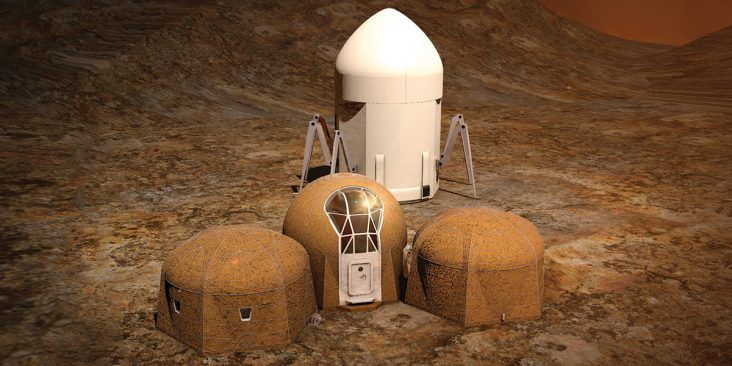Nabholz designer, team win NASA challenge
by August 17, 2018 3:45 pm 615 views

Team Zopherus of Rogers won first place in NASA's 3D-printed Habitat Challenge, Phase 3, Level 1 competition. Trey Lane of Nabholz Corp. in Rogers was part of three-man team that won the competition in which teams worldwide created a 60% design of a habitat that could sustain human life on Mars.
Trey Lane, virtual design and construction specialist for Nabholz Corp. in Rogers, led a three-man team to win a NASA competition and nearly $21,000.
Team Zopherus, comprised of Lane, architect Corey Guidry and graphics designer Tyler McKee, was first place in NASA’s 3D-Printed Habitat Challenge, Phase 3, Level 1 competition. The team completed a 60% design of a habitat that could sustain human life on Mars. The second level of phase three is to complete a 100% design of the habitat, and the other levels of the competition lead up to building the habitat at one-third scale.
The team is evaluating whether to compete in the next level, Lane said.
In the most recent part of the competition, Team Zopherus produced a video showing the habitat would be built by a robot autonomously. The robot is a giant capsule with legs that would encase the area where each structure would be built. Inside the capsule is a robotic arm with an attached 3D printer that would print the structures, using concrete and plastic. Once a structure is completed, the robot would move to where it would print the next structure. The designed habitat included three structures, but more could be built if needed.
Lane explained the robot would encase the structure as it was built because of the environment on Mars. Concrete cannot be printed in freezing temperatures and at low pressure, which are found on Mars. Also, the issue of not being able to print overhangs using concrete was resolved with the plastic, essentially the consistency of a milk jug. The plastic would not only act as a reinforcement for the concrete as it’s printed, but it would also allow for an airtight shell for the structures.
NASA and Bradley University of Peoria, Ill., selected five out of 18 teams worldwide that participated as winners of a share of $100,000 in the competition. “Leading Team Zopherus on this project has been exciting from start to finish, but winning first place has taken the excitement to a whole new level,” Lane said.
